Death
Death by Deodorant

As bizarre as it may sound to die from overuse of deodorant, this isn't the first time it's happened. If I had a kid, I don't think I'd let them use the spray stuff. It's toxic. I'd tell them to use solid deodorant, because that kind can't kill you.
Some of the other cases:
1998: 16-year-old Jonathan Capewell from Oldham. He was "a normal, healthy teenager who was not indulging in any form of substance abuse. He was simply overcome by excessive use of anti-perspirants."
2008: 12-year-old Daniel Hurley was "always putting gel on his hair and spraying deodorant." He was found collapsed in a bathroom after having sprayed "copious" amounts of Lynx Vice spray.
2015: 16-year-old Thomas Townsend of Kent was found collapsed, surrounded by 42 cans of deodorant. His mother said, "He would not take showers but would stand there with a deodorant and spray half the can on him."
Posted By: Alex - Thu Mar 30, 2017 -
Comments (6)
Category: Death, Hygiene, Baths, Showers and Other Cleansing Methods
Blinky the Friendly Hen

April 27, 1978: Artist Jeffrey Vallance bought a frozen chicken (a Foster Farms fryer) at a supermarket and then buried it at the Los Angeles Pet Cemetery, following a brief memorial service. He also installed a grave marker for the frozen bird, naming it "Blinky the Friendly Hen." He came to think of Blinky's grave as being like the grave of the Unknown Chicken, representing "all the millions of chickens who are slaughtered and sold as food."
According to kcet.org, "Ten years later, he would have the body exhumed so an autopsy could be performed by UCLA's head of pathology. The tenth anniversary exhibit on the life of Blinky, at the Rosamund Felsen Gallery in Los Angeles, featured a 'shroud of Blinky,' and a recreation of the cemetery's viewing room, with a rubber chicken lying in state. Blinky was later reburied at the cemetery."
It seems that there were also an event to mark the 30th anniversary of Blinky's funeral. The 40th anniversary is coming up next year, so perhaps there'll be another event in Blinky's honor.
Vallance also wrote a book commemmorating Blinky.
More info: Black Acrylic blog
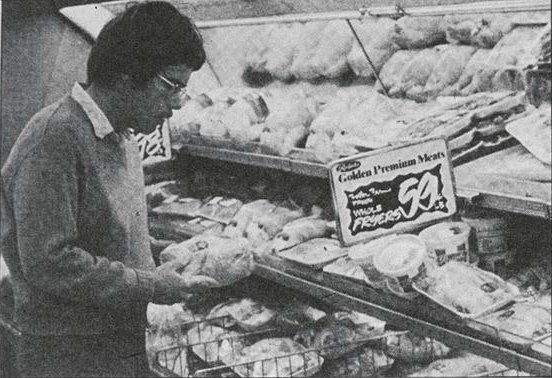


Bridgewater Courier-News - Nov 3, 1983
Posted By: Alex - Fri Mar 03, 2017 -
Comments (2)
Category: Animals, Art, Death, 1970s
Death by Space Helmet
Another example of the danger of reading comic books. From July 1954:See here for a previous example.
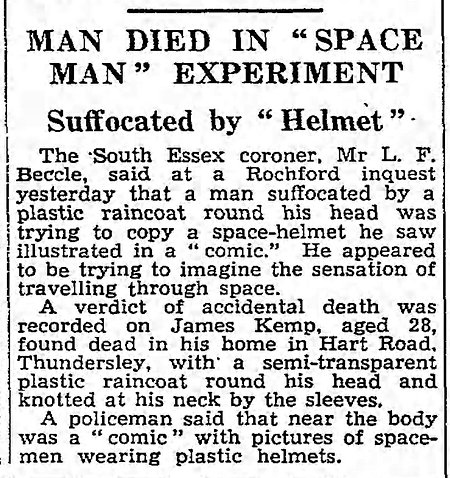
The Guardian - July 27, 1954
Perhaps the space helmet that inspired him looked something like this:

Posted By: Alex - Sat Feb 25, 2017 -
Comments (3)
Category: Death, Spaceflight, Astronautics, and Astronomy, Comics, Headgear, 1950s
The famous rhyming will
In 1830 Mr. Wheatstone, a solicitor of Chancery Lane died and left the following will, which was admitted to probate:| As to all my worldly goods now or to be in store, I give to my beloved wife and her's, for evermore; I give all freely! — I no limit fix! This is my Will, and she's Executrix. |
As far as I can tell, this is the first time anyone ever used this rhyming will, but it definitely wasn't the last. It caught on, and many other people subsequently used the exact same poem as their final will (slightly updating the language to make it more modern). It continued to be used at least up until the 1950s. I'm not sure if anyone has used it since then.

The London Observer - Apr 18, 1830
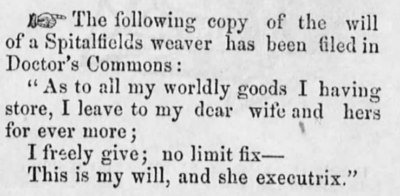
The New Bloomfield, Pa Times - Sep 27, 1870
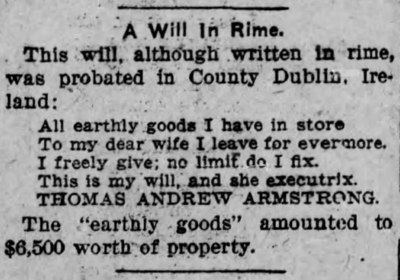
Altoona Tribune - Nov 16, 1912
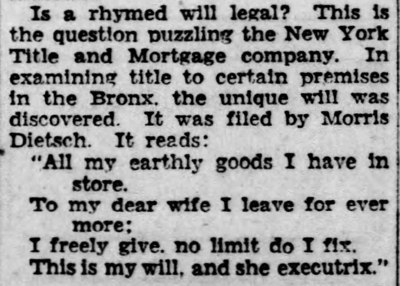
Battle Creek Enquirer - Mar 3, 1928
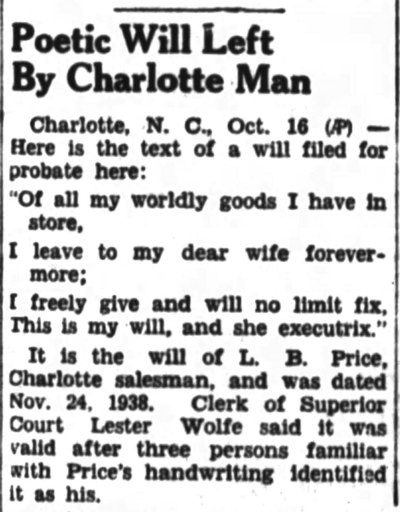
The Greenwood Index-Journal - Oct 16, 1950
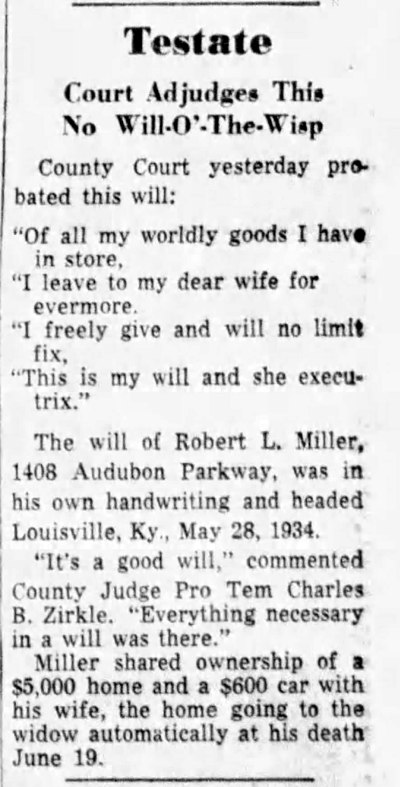
The Louisville Courier-Journal - Aug 6, 1954
Posted By: Alex - Sat Feb 18, 2017 -
Comments (1)
Category: Death
The Great Texas Monorail Disaster of 1968


Somehow this seems like a particularly ignoble way to go, as if you had a fatal bumper-car accident.
Full story here.
Posted By: Paul - Tue Feb 07, 2017 -
Comments (0)
Category: Death, Disasters, Fairs, Amusement Parks, and Resorts, Motor Vehicles, 1960s
Mount Mihara: Japan’s Suicide Volcano
If you really have to do yourself in, suicide by volcano sounds pretty dramatic and exciting.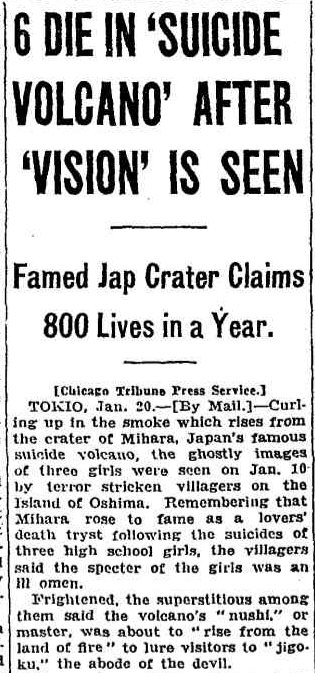
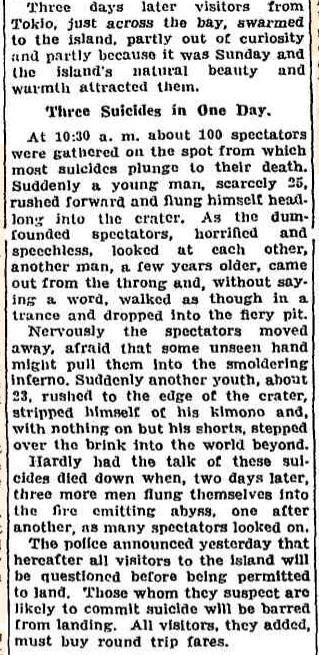
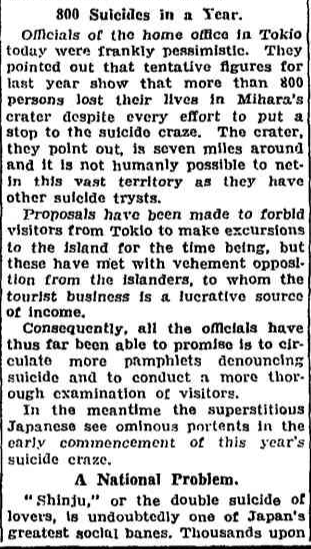
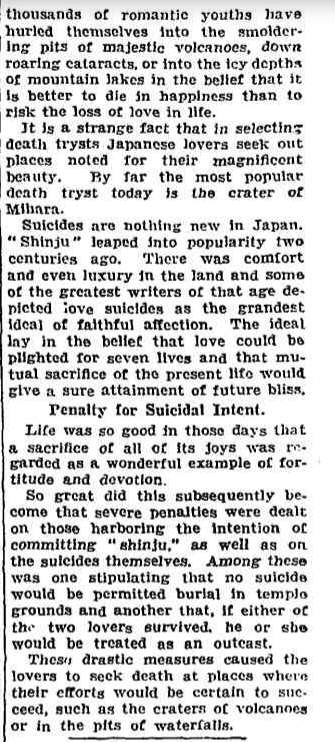
Original article here.
Wikipedia info here.
Posted By: Paul - Fri Jan 20, 2017 -
Comments (4)
Category: Death, Suicide, 1930s, Asia
Hinkle Tablets
In 1915, this nostrum contained a nice little dose of strychnine. One assumes that by the time of the 1956 advert, they had eliminated that ingredient.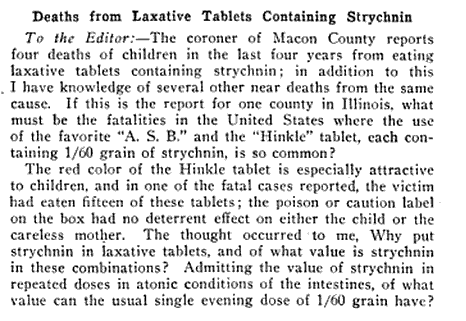
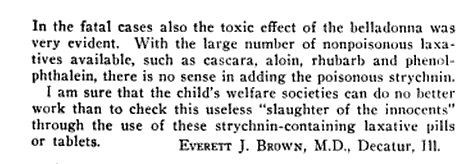
Original letter here.
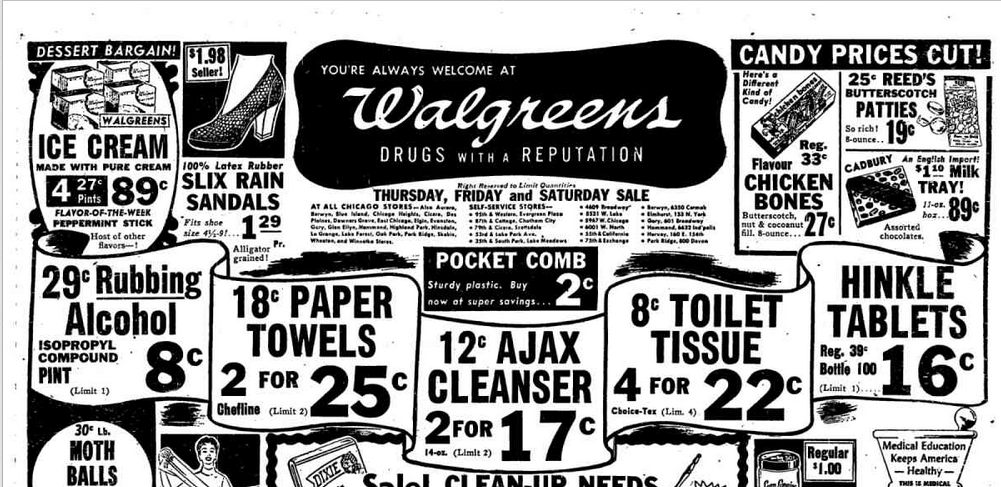
Original ad here (page 13).
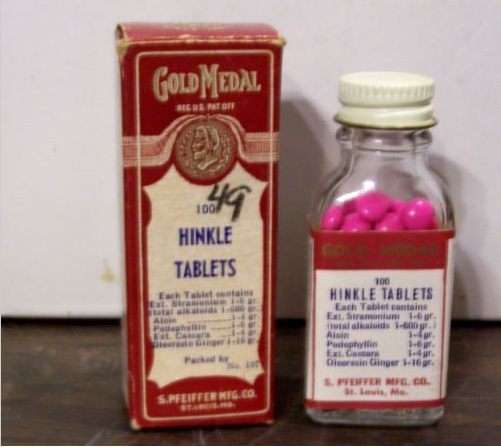
Posted By: Paul - Mon Jan 16, 2017 -
Comments (3)
Category: Death, Advertising, Patent Medicines, Nostrums and Snake Oil, 1910s, 1950s
Perky the Duck

It seems like 2016 was a year marked by an unusually high number of celebrity deaths. And among those who passed away was Perky, the duck who wouldn't die, who did, in fact, finally kick the bucket.
Perky was a one-pound, female, ring-neck duck who gained international fame in January 2007 after she survived being shot three times by a hunter, retrieved by a dog, and then stored in the hunter's refrigerator for two days.
By chance, the hunter's wife happened to open the refrigerator (she reportedly rarely looked in it because it was the spare fridge her husband used to store game), at which point Perky lifted her head to say hello. The wife took compassion on Perky and rushed her to a vet.
That wasn't the end of Perky's brush with death. During the surgery to repair the gunshot damage Perky stopped breathing, but the surgeon was able to revive her.
Once she had regained her health, Perky was given a home at the Tallahassee Museum, where she lived for nine years before dying of old age in May 2016.
Posted By: Alex - Tue Jan 03, 2017 -
Comments (1)
Category: Animals, Death, Obituaries
They Died Laughing
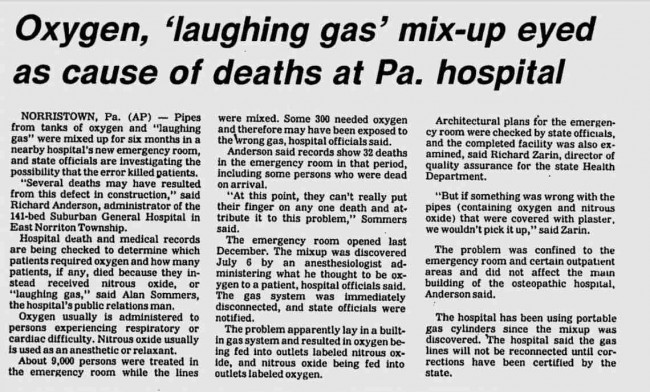
[Click to enlarge]
Original article here.
Posted By: Paul - Thu Dec 22, 2016 -
Comments (5)
Category: Death, Hospitals, 1970s, Goofs and Screw-ups
Fish Chokes Swimmer
One for the weird death file: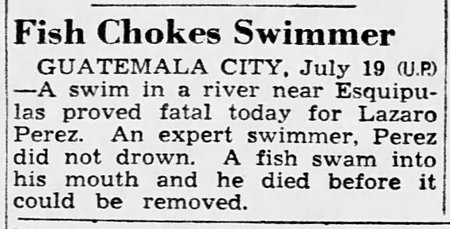
Great Falls Tribune - July 20, 1945
GUATEMALA CITY, July 19 (U.P.) — A swim in a river near Esquipulas proved fatal today for Lazaro Perez. An expert swimmer, Perez did not drown. A fish swam into his mouth and he died before it could be removed.
Posted By: Alex - Wed Dec 14, 2016 -
Comments (1)
Category: Death, Fish, 1940s

| Who We Are |
|---|
| Alex Boese Alex is the creator and curator of the Museum of Hoaxes. He's also the author of various weird, non-fiction, science-themed books such as Elephants on Acid and Psychedelic Apes. Paul Di Filippo Paul has been paid to put weird ideas into fictional form for over thirty years, in his career as a noted science fiction writer. He has recently begun blogging on many curious topics with three fellow writers at The Inferior 4+1. Contact Us |




